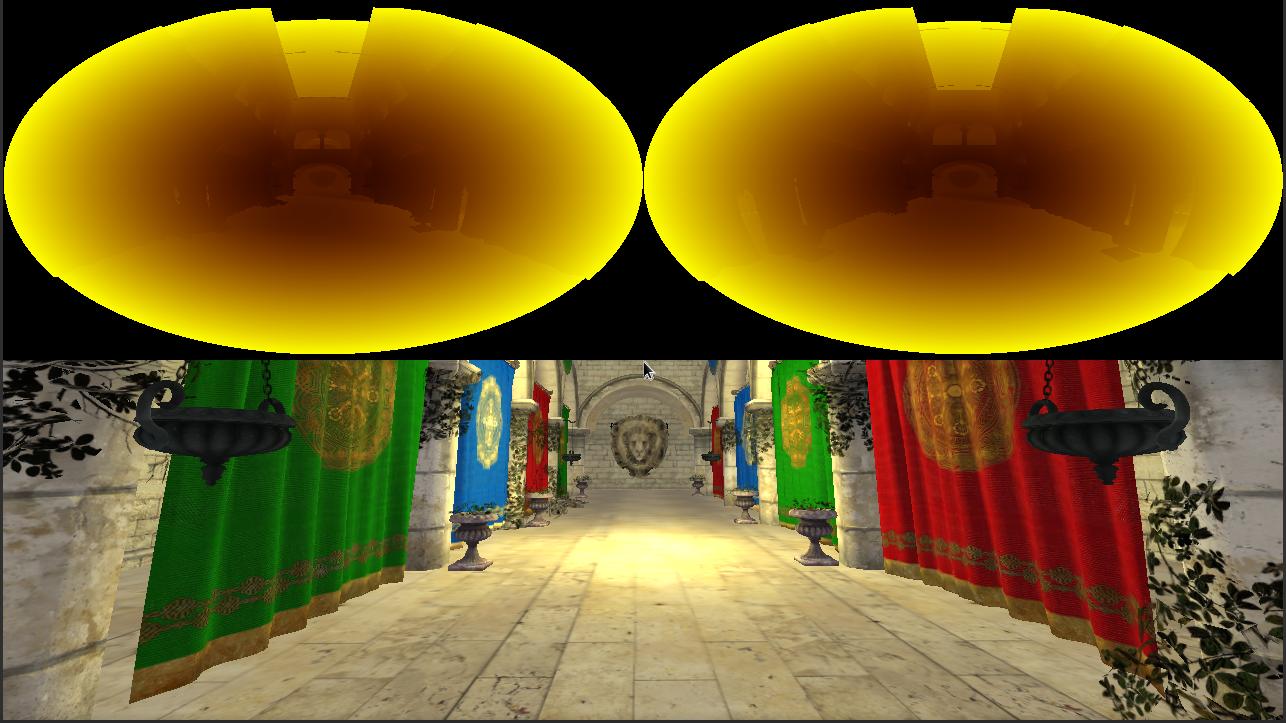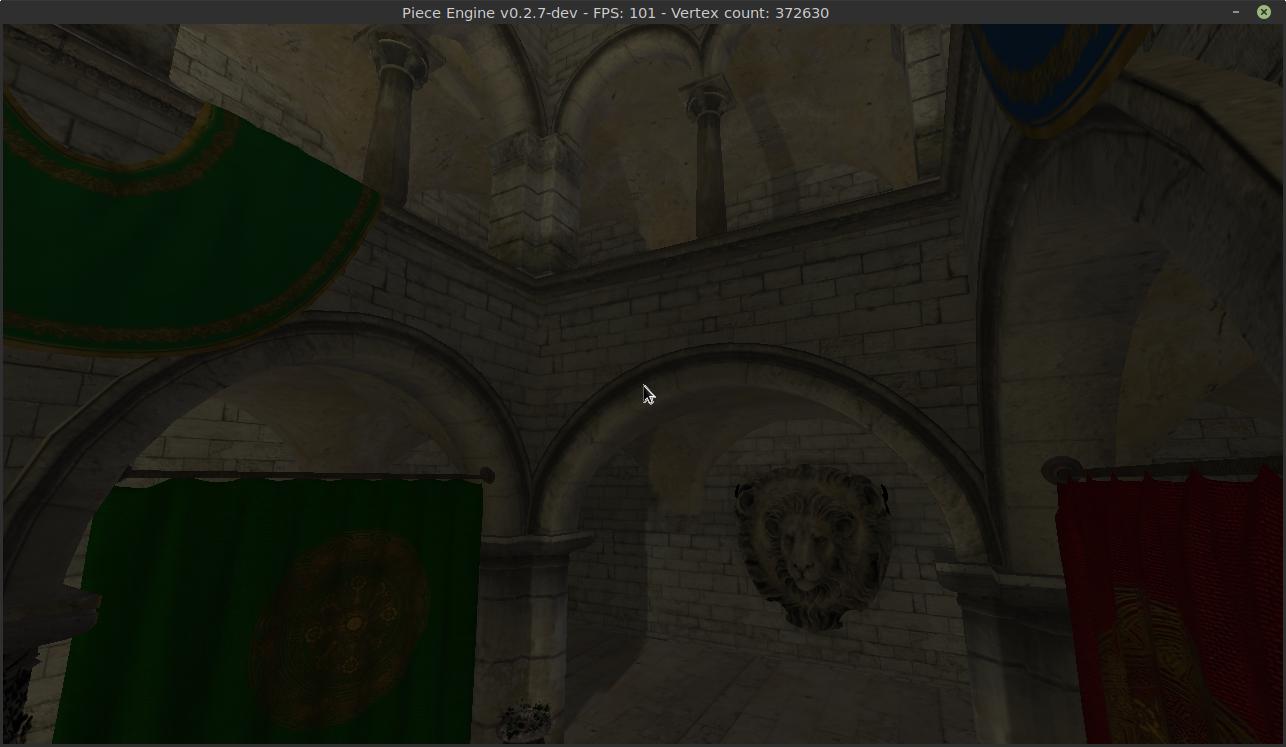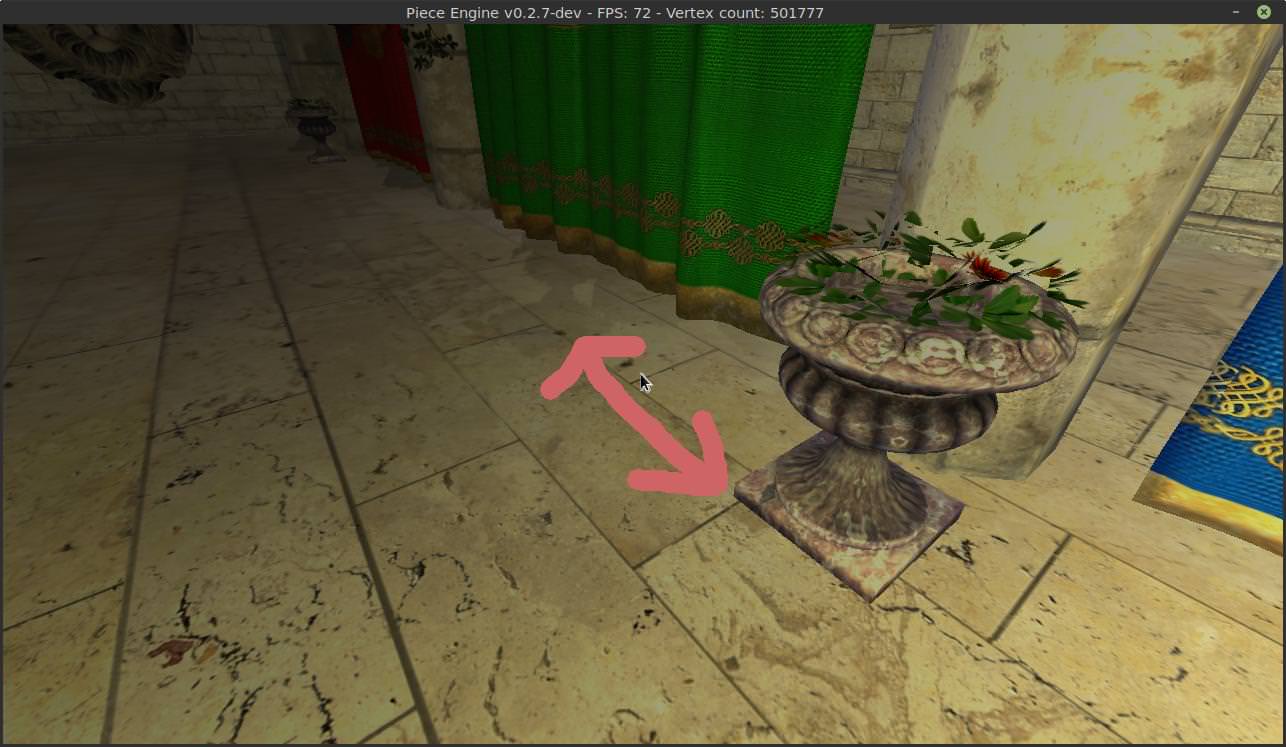Point light Двойной параболоид VSM в режиме отложенного рендеринга
Я следовал этому руководству, чтобы реализовать функцию отображения теней для точечного света при отложенном рендеринге.
Я использую GLSL 3.3, левую систему координат. Вот что я делал:
Я визуализирую сцену с двойными параболоидными картами, сохраняя глубину и глубину * глубина.
Результат:
Выше изображение содержит переднюю и заднюю карты. Точечный светильник находится в центре сцены, вы можете видеть, где он больше всего светится желтым.
Затем я установил полноэкранный шейдерный проход. Я делаю это путем преобразования учебного кода из FX в GLSL.
Код.fx автора:
float4 TexturePS(float3 normalW : TEXCOORD0, float2 tex0 : TEXCOORD1, float3 pos : TEXCOORD2) : COLOR
{
float4 texColor = tex2D(TexS, tex0 * TexScale);
pos = mul(float4(pos, 1.0f), LightView);
float L = length(pos);
float3 P0 = pos / L;
float alpha = .5f + pos.z / LightAttenuation;
P0.z = P0.z + 1;
P0.x = P0.x / P0.z;
P0.y = P0.y / P0.z;
P0.z = L / LightAttenuation;
P0.x = .5f * P0.x + .5f;
P0.y = -.5f * P0.y + .5f;
float3 P1 = pos / L;
P1.z = 1 - P1.z;
P1.x = P1.x / P1.z;
P1.y = P1.y / P1.z;
P1.z = L / LightAttenuation;
P1.x = .5f * P1.x + .5f;
P1.y = -.5f * P1.y + .5f;
float depth;
float mydepth;
float2 moments;
if(alpha >= 0.5f)
{
moments = tex2D(ShadowFrontS, P0.xy).xy;
depth = moments.x;
mydepth = P0.z;
}
else
{
moments = tex2D(ShadowBackS, P1.xy).xy;
depth = moments.x;
mydepth = P1.z;
}
float lit_factor = (mydepth <= moments[0]);
float E_x2 = moments.y;
float Ex_2 = moments.x * moments.x;
float variance = min(max(E_x2 - Ex_2, 0.0) + SHADOW_EPSILON, 1.0);
float m_d = (moments.x - mydepth);
float p = variance / (variance + m_d * m_d); //Chebychev's inequality
texColor.xyz *= max(lit_factor, p + .2f);
return texColor;
}
Мой переведенный код GLSL:
void main() {
vec3 in_vertex = texture(scenePosTexture, texCoord).xyz; // get 3D vertex from 2D screen coordinate
vec4 vert = lightViewMat * vec4(in_vertex, 1); // project vertex to point light space (view from light position, look target is -Z)
float L = length(vert.xyz);
float distance = length(lightPos - in_vertex);
float denom = distance / lightRad + 1;
float attenuation = 1.0 / (denom * denom);
// to determine which paraboloid map to use
float alpha = vert.z / attenuation + 0.5f;
vec3 P0 = vert.xyz / L;
P0.z = P0.z + 1;
P0.x = P0.x / P0.z;
P0.y = P0.y / P0.z;
P0.z = L / attenuation;
P0.x = .5f * P0.x + .5f;
P0.y = -.5f * P0.y + .5f;
vec3 P1 = vert.xyz / L;
P1.z = 1 - P1.z;
P1.x = P1.x / P1.z;
P1.y = P1.y / P1.z;
P1.z = L / attenuation;
P1.x = .5f * P1.x + .5f;
P1.y = -.5f * P1.y + .5f;
// Variance shadow mapping
float depth;
float mydepth;
vec2 moments;
if(alpha >= 0.5f)
{
moments = texture(shadowMapFrontTexture, P0.xy).xy;
depth = moments.x;
mydepth = P0.z;
}
else
{
moments = texture(shadowMapBackTexture, P1.xy).xy;
depth = moments.x;
mydepth = P1.z;
}
// Original .fx code is: float lit_factor = (mydepth <= moments[0]);
// I'm not sure my translated code belew is correct
float lit_factor = 0;
if (mydepth <= moments.x)
lit_factor = mydepth;
else
lit_factor = moments.x;
float E_x2 = moments.y;
float Ex_2 = moments.x * moments.x;
float variance = min(max(E_x2 - Ex_2, 0.0) + SHADOW_EPSILON, 1.0);
float m_d = (moments.x - mydepth);
float p = variance / (variance + m_d * m_d); //Chebychev's inequality
fragColor = texture(sceneTexture, texCoord).rgb; // sample original color
fragColor.rgb *= max(lit_factor, p + .2f);
}
Прямо сейчас я не знаю, где коснусь, чтобы правильно отобразить тень. Может ли кто-нибудь указать мне на это?
2 ответа
Почему вы дублируете расчет проекции параболоида?
Вы вычисляете это на 'vert', затем 'P0' и 'P1', разве вы не должны делать это только на 'P0' и 'P1'? (Оригинальный код не делает это на "pos").
РЕДАКТИРОВАТЬ:
Ваш lit_factor неверен, он должен быть либо 0.0, либо 1.0.
Вы можете использовать встроенную функцию step() GLSL следующим образом:float lit_factor = step(mydepth, moments[0]);


